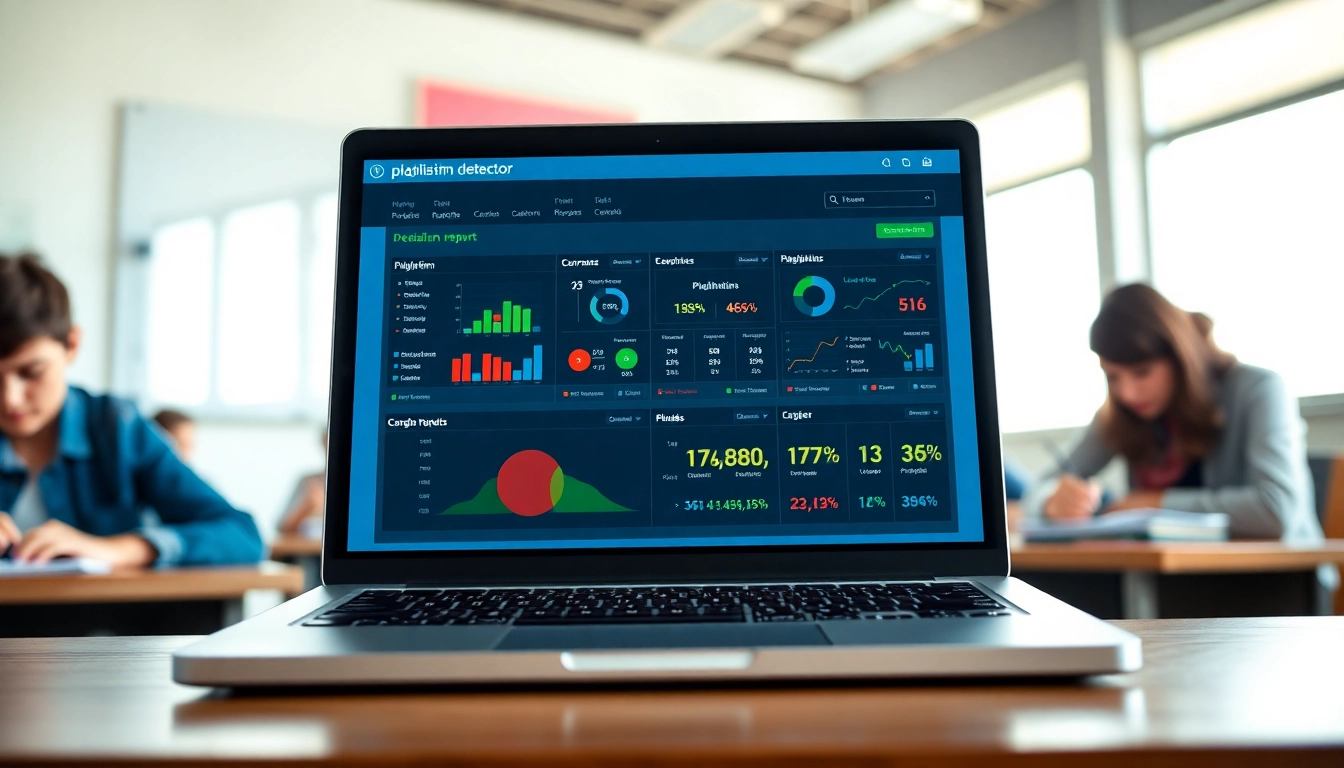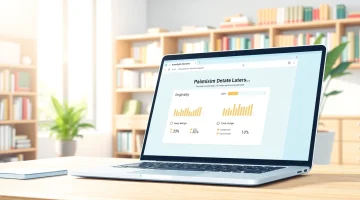
Comprehensive Guide to Selecting the Right Plagiarism Detector for Your Needs
Understanding Plagiarism Detectors
In the digital age, the integrity of written content is critical, whether for academic purposes, professional publishing, or leisure writing. Plagiarism, defined as the act of using someone else’s work, ideas, or expressions without proper attribution, can lead to serious consequences in various fields. This makes the role of a plagiarism detector invaluable. These tools not only help in identifying copied material but also assist in fostering a culture of originality and ethical writing practices. Understanding how they function and their importance can empower users to make informed choices in their writing endeavors.
What is a Plagiarism Detector?
A plagiarism detector is a software tool or service designed to analyze texts for similarities to other known sources. It helps authors and educators ascertain whether a given piece contains original content or if it borrows excessively from other works. Plagiarism detectors utilize algorithms and databases to check submitted documents against a plethora of online and offline resources, producing a report that indicates the percentage of originality and flagged areas that may require citation or revision.
How Do Plagiarism Detectors Work?
Most plagiarism detectors work through a multi-step process:
- Text Submission: Users submit their text, usually by copy-pasting or uploading a document.
- Database Scanning: The software scans the text against a massive database, which can include articles, websites, academic papers, and even previous submissions.
- Algorithm Analysis: Advanced algorithms analyze the text, looking for matches or similarities in phrasing, sentence structure, and overall content.
- Report Generation: The detector produces a report detailing matches found, along with a similarity percentage and sources from which the matches were drawn.
This process ensures that authors can identify potential plagiarism and take corrective action before publication or submission.
Importance of Using a Plagiarism Detector
The importance of utilizing a plagiarism detector cannot be overstated:
- Protecting Academic Integrity: For students, maintaining originality in assignments is crucial for upholding academic standards and personal integrity.
- Avoiding Legal Issues: For professionals and businesses, plagiarism can lead to legal disputes and damage reputations.
- Enhancing Writing Skills: Regularly checking work for unintended plagiarism can help authors improve their writing habits and referencing skills.
- Fostering Originality: By using these tools, writers can shift their focus to creating unique content that adds value to the discourse in their field.
Features to Look for in a Plagiarism Detector
When choosing a plagiarism detector, several features can enhance the user’s experience and ensure effectiveness. Here are crucial aspects to consider:
Accuracy and Reliability
The accuracy of a plagiarism detector is paramount. Look for tools that provide a comprehensive database and reliable algorithms to ensure a high detection rate of copied content. User reviews and academic endorsements can often indicate reliability, revealing how well the detector performs in real-world scenarios.
User-Friendly Interface
A user-friendly interface allows even the most tech-challenged individuals to navigate the tool effortlessly. Features such as simple uploading options and clear reporting layouts contribute to a more positive user experience.
Supported File Formats and Word Limits
Some plagiarism detectors only accept certain file formats or impose specific word limits, which can affect their usability. Verify that the tool supports your required formats (e.g., .doc, .pdf, .txt) and consider your typical text lengths.
Top Plagiarism Detectors to Consider
With so many plagiarism detectors available, selecting the right one can be a daunting task. Here’s a breakdown of some of the top options in the market:
Comparing Free and Paid Options
Many plagiarism detectors offer free versions alongside premium services. Free tools are often limited in functionality—such as fewer comparisons or less comprehensive databases—while paid options typically provide deeper scanning, more features, and customer support. Examples of popular detectors include:
- Grammarly: Known for its grammar checking capabilities, it also offers a powerful plagiarism detection feature in its premium version.
- Turnitin: Widely used in educational institutions, it has extensive databases and is reliable for academic text checking.
- DupliChecker: This free tool allows users to quickly check documents and offers some premium features if needed.
User Reviews and Ratings
Before committing to any tool, researching user reviews and ratings can provide insight into the software’s effectiveness and user satisfaction. Websites and platforms that aggregate reviews can serve as beneficial resources for comparing different tools based on actual user experiences.
Unique Features and Benefits
Some plagiarism detectors provide unique features such as:
- AI Content Detection: Some advanced tools now incorporate AI technology to identify and flag AI-generated content, clarifying the originality of submissions.
- Integration Options: Certain tools can be integrated with learning management systems (LMS) or writing tools, streamlining the editing process.
- Student-Friendly Editions: Tools like PapersOwl offer special versions tailored for students, focusing on reports that help in learning proper citation and referencing.
Common Mistakes When Using a Plagiarism Detector
While plagiarism detectors are powerful tools, users often make mistakes that can undermine their effectiveness. Awareness of these common pitfalls is crucial for maximizing the value derived from these services:
Misinterpreting Results
One of the most significant issues arises when users misinterpret the results. A high similarity percentage does not necessarily indicate plagiarism; it may also reflect common phrases or properly cited material. Users should carefully examine the reports and understand the context of flagged content.
Overreliance on Tools
Another prevailing mistake is overreliance on plagiarism detectors. While these tools are helpful, they should only be one aspect of a thorough editing process. Writers should still engage in careful proofreading and adhere to proper citation protocols to maintain writing integrity.
Ignoring Proper Citation Practices
Finally, relying solely on a plagiarism detector without learning proper citation practices can lead to repeated issues. Users should familiarize themselves with different citation styles (e.g., APA, MLA, Chicago) to ensure that they can adequately attribute sources in their work.
Maximizing the Benefits of Your Plagiarism Detector
To harness the full potential of plagiarism detectors, users can take several steps to optimize their experience:
Integrating with Workflow
Incorporating the use of a plagiarism detector into your writing workflow can enhance productivity. Consider running a preliminary check as you draft a document and then again before final submission. Regular checks can help identify potential issues early on and allow for time to rephrase or correctly attribute sources.
Enhancing Writing Skills
Moreover, leveraging plagiarism detection reports as learning tools can significantly improve writing skills. By reviewing flagged sections, users can understand which phrases might be too similar to existing works. This awareness can foster creativity and promote better paraphrasing practices.
Balancing Originality and Research
Finally, finding a balance between originality and research is essential. Plagiarism detectors serve as checks but should not deter writers from utilizing existing literature. Instead, they should encourage a thoughtful approach to presenting researched material while ensuring that original interpretations shine through.



